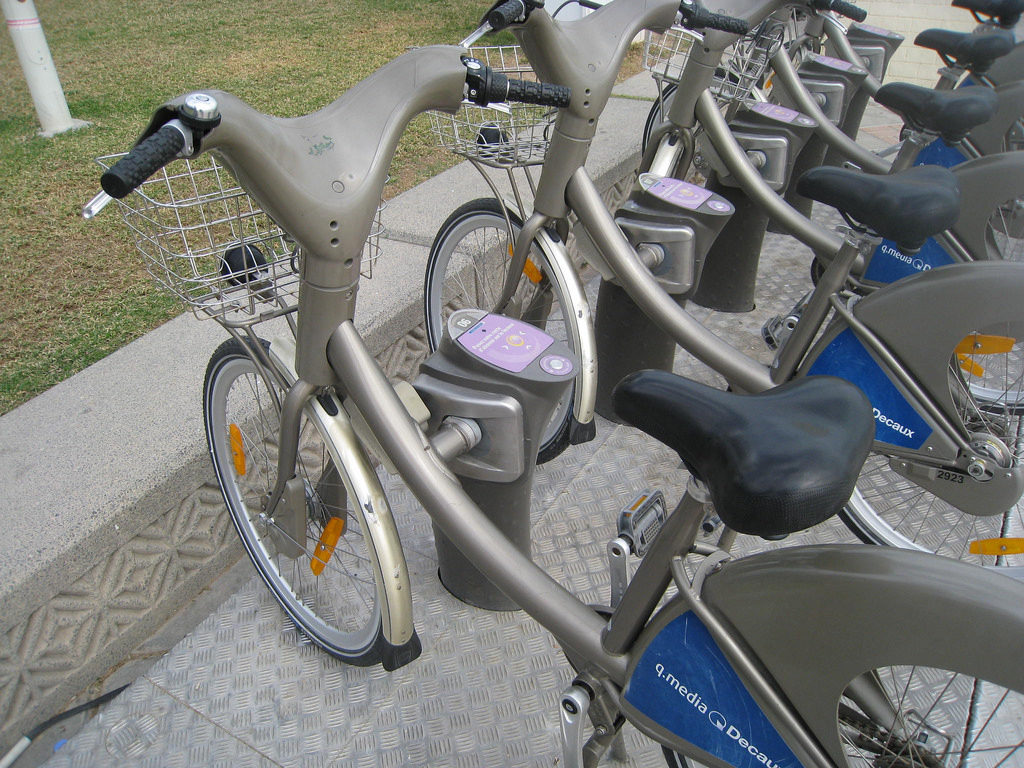The rapidly developing Middle East, like any growing region, is grappling with building and maintaining roads and public transportation systems to serve the increasing population. An ongoing emphasis on healthy lifestyles is continuing to push cycling to the forefront, as riding a bike does not create pollution or add to vehicle traffic congestion.
However, problems have arisen in determining how to make the infrastructure in Middle Eastern cities safe for cyclists,whether it involves upgrading the traffic lights at intersections with options for cyclists or adding bicycle lanes. Others are working to make more bicycles available and to make cycling convenient for more people. Here are some of the issues and developments related to cycling in the Middle East:
Bike Sharing
 Dani Simons | Flickr
Dani Simons | FlickrCommunal bicycles have become a worldwide trend, and Doha was the first Middle Eastern city to implement it. In 2011, residents could ride the bicycles for free for the first 30 minutes and then were charged a fee. At the time, a Qatar official said the program was a step toward separate bike lanes and a more bicycle-friendly country.
Other Middle Eastern countries integrated bike sharing into their transportation systems in subsequent years. In 2017, Lebanon introduced a communal bike program in Beirut. If the city, which is overrun with cars, embraces the program, then shared bicycles could become a means of sustainable public transportation.
Jawad Sbeity, a business owner who hopes to start a bicycle revolution in Lebanon, has been renting bicycles in Beirut for 20 years. He now has about 2,000 bicycles, which are typically rented to families and young adults on the weekends.
Sbeity wants to extend bicycling and plans to set up 50 bike stations in Lebanon by 2020 in hopes that people will park in one of the many lots on the perimeter of Beirut and then cycle into the city.While the parking lots are in place, they are mostly empty. Sbeity acknowledges that it will take time to change commuters’ mindset.
Other similar bike-sharing systems, with rental centers around malls, apartment complexes, universities, and other populated areas, are opening or are planned in Tripoli, Byblos, and cities in the south of Lebanon. The systems run like a metro train, where users can pay with a credit or debit card, an app, or a prepaid card. They can buy weekly or monthly passes at a discount.
Some critics have pointed out obstacles to such programs, noting that some roads don’t have space for bicycles. Some are city routes that are piled with garbage, while others have cars or construction equipment blocking them. They argue that cities need to pay for infrastructure improvements, such as bike racks, bike lanes, and more street lights, before bicycle-sharing programs can become successful.
Changing the Mindset
While urban cycling has many benefits, in reality cycling is foreign to many urban residents. They may not know what to wear when riding a bike, the rules of sharing the road with cars, or safety measures to take when cycling.
One Beirut resident, Siwar Kraytem, has written a guidebook about riding a bicycle in the city. She originally wrote“ABCycling in Beirut: A Guide to Cycling in the City of Organised Chaos” as a graphic design project in a university class. The published version, which has pull-out sections and posters, covers issues such as gear, how to carry your things, planning routes, safety, and information about different types of bicycles.
Kraytem, who also is an avid cyclist, told a media outlet that riding a bicycle in the city has given her the freedom to travel where she wants to without the need to find a taxi or ride from a friend.
Beirut is an ideal location for introducing cycling, as it has more than 300 sunny days a year, and it only takes about 30 minutes to ride across the city.
Adding lanes
Some countries around the Middle East already have added bike lanes in the hopes of reducing pollution and traffic congestion.
In the summer of 2018, the longest bike lane in the Middle East opened along the Cairo-Sokhna Highway. The lane, which is about 180 kilometers long, is the joint work of the Maadi Athletes Club and The National Company for Roads Building and Development. Critics have noted that the lane doesn’t have a barrier between vehicle traffic, but organizers hope that it will encourage cycling in Egypt.

